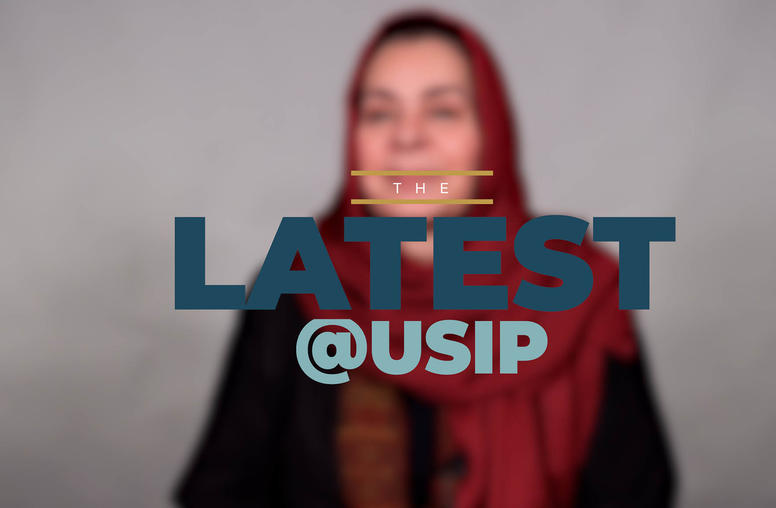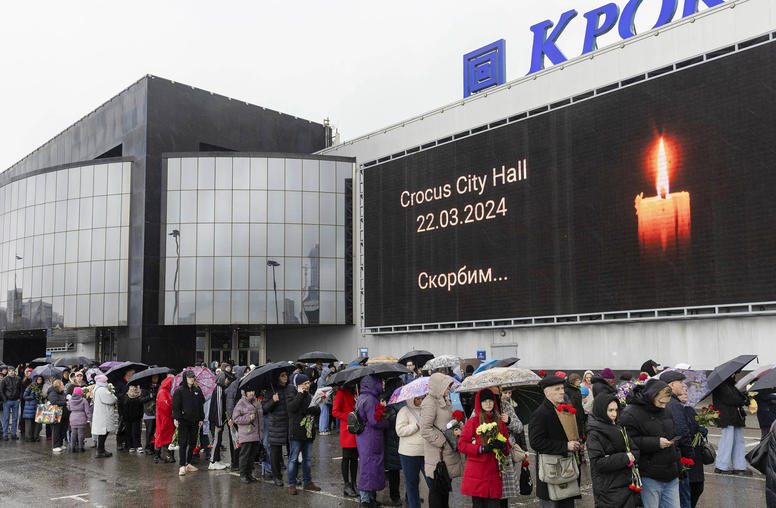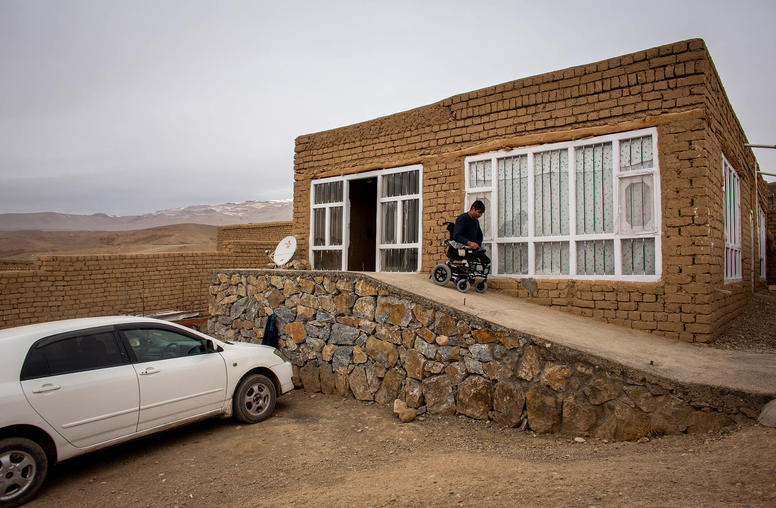Illegal Extraction of Minerals as a Driver of Conflict in Afghanistan
Based on qualitative surveys and focus group discussions with communities in four Afghan provinces, this Peace Brief analyzes how nonstate actor control over small-scale mining sites and illegal extraction contributes to conflict, the local political economy, and the incentive structures that support illegal extraction.
Summary
- Most mineral extraction in Afghanistan is either illegal or unregulated. In some cases, mines have been operated by local communities for decades under informal arrangements that predate the current regulatory regime. In others, they are controlled or exploited by the Taliban or criminal networks.
- Illegal and unregulated extraction contribute to conflict by inducing contestation over access to lucrative mining profits and by financing the insurgents and criminal mafias that use violence to gain power.
- Illegal and unregulated mineral extraction deprives the government of revenue owed in the form of royalties and taxes that, among other things, could fund critical security services.
- Government control over minerals, however, is not always perceived by communities as beneficial. In some cases, communities support insurgent or mafia control of mines expressly to avoid illegal taxation by corrupt officials or to prevent the government from removing an important source of local income.
- To achieve its goal of effectively regulated extraction that produces revenue for the government and denies that revenue to the Taliban and criminal groups, the government needs to provide a path for legal operation of mines that improves local welfare.
- Steps in that direction could include legalization of artisanal mining without undue regulations, a program to deliver better government social services in exchange for formal mine registration and payment of legal taxes, and assistance with new technology and safety for mines.
Introduction
Mining has the potential to make significant contributions to Afghanistan’s economy. However, the majority of active mine sites in Afghanistan are neither government regulated nor government controlled, even though—according to the law—all mineral resources are the property of the state.
Control over small-scale mining sites and illegal extraction contributes to conflict, the local political economy, and the incentive structures that support illegal extraction. Illegal extraction also benefits those who use violence to challenge the state, both directly by financing their operations and indirectly through the loss of government revenues and control of strategic locations around the country. For the Taliban, extractives are the second-largest revenue stream after narcotics: annual revenue is estimated to be between $200 and $300 million per year—at least three hundred times more than reported government revenues from mineral extraction.1 A significant number of licensed mines (also called formalized mines) also see some illegal or “unregulated” extraction in the form of excess unreported extraction, violations of exploration licenses, or failure to pay taxes or royalties owed to the government.
In some mining areas, local communities are also involved in localized conflict related to extraction. Some may hire local militias to help them guard and control access to the mine, and use force to protect mines from outsider or government ownership claims. Conflict associated with illegal extraction seems to be confined to conflict between communities and the government, and between the government and nonstate actors controlling the mine site, rather than within or between communities in mining areas. At the sites surveyed for this report, respondents said that extraction had not led to substantial conflict or disputes between local tribes because rules concerning ownership were clear and well accepted. Corruption associated with extractives and intratribal fighting does, however, create considerable local tensions.
Disputed Ownership
A range of actors are involved in illegal and unregulated extraction: local power brokers, members of parliament, security forces, local government officials, community members, the Taliban, and traders. They often work together and are not likely to relinquish their interests in mineral extraction easily. The government needs to find a way to placate them, eliminate their incentives, and otherwise curb their involvement in illegal and unregulated extraction.
Local communities in the vicinity of some extractive sites claim customary ownership and organize and undertake extraction activities themselves. They have developed systems for managing the extraction that include clear (informal) ownership, rules for extractive rights, and what is considered a more equitable distribution of revenues.
For the Taliban, extractives are the second-largest revenue stream after narcotics ... at least three hundred times more than reported government revenues from mineral extraction.”
Community distrust of the government is significant where licensed mines have been closed to prevent illegal extraction and informal mines have been closed to prepare for commercial licensing. Mining communities have accused government officials and power brokers of extracting illegal revenue and collaborating with both the Taliban and the police.
To resist formalization, communities sometimes support insurgent control of mines. From that perspective, they believe it is better to pay the Taliban a percentage of profits from local extraction than to yield to government control and have more taken by corrupt officials or receive nothing when a mine is closed. The Taliban is successfully recruiting locals, including youth, from areas where extraction has been halted. Resentment toward the government and the lack of other income-earning opportunities provide the Taliban with opportunities to leverage support. Revenues from illegal extraction, according to interviewees with the US Department of Defense and Afghanistan’s Ministry of Mines and Petroleum, are a significant source of financing for the Taliban in many mining areas.
Socioeconomic Impacts of Extraction
Anxiety is common among communities in mining areas, partly because of concerns about the few other livelihood opportunities open to locals other than extraction. Evidence is ample of young people having migrated away from areas where the government ended informal extraction. Interviewees in an area where mines had been closed said that it was hard to keep young people in the area after they benefited from the income mining can generate.
Although income from informal extraction has allowed mine owners and mine leaders to acquire private goods including cars and houses, it has not typically been invested in improving public goods that benefit the community, whether social services or local economies. Much of the resistance from local communities to formalized extraction has also taken place for similar reasons; that benefits do not accrue to the community. Based on the current Mineral Law, 5 percent of revenue from extraction is meant to be set aside for development activities, but many communities feel that they do not benefit from this spending, which is set by provincial governments.
Opportunities for Community Incentives
Mining communities generally said they preferred government control over that of the Taliban. This preference, however, may reflect rather idealistic views given that, at the same time, interviewees also believed that the reality of formalization was likely to mean that the only benefits they might receive are a certain number of guaranteed jobs, but not local revenue or equivalent benefit in services. Respondents also remarked that they would like to see support for the introduction of mechanization and professionalization of mining and development of related livelihood opportunities (or within extractives value chains), and believe this could only be undertaken by the government.
Other studies show that young people find and prefer higher-status livelihood opportunities in areas with formal medium- and large-scale mines, and that this loss of opportunity is difficult for them to replace with traditional livelihoods and lower-status tasks.2 Some communities perceive that, under strong government control, the levying of informal taxes by the Taliban, police, and others will diminish, and that local communities will receive more of the revenue they generate.
Communities are clear that they want government services, such as schools, clinics, and roads, in return for government control of local mines. Beyond local infrastructure, to address the (limited) tensions that have arisen within tribes and communities, communities ideally also want wealth generated from extraction to be better distributed across communities. To secure their access and revenue from the mines when ownership rights and government is unclear, local leaders at mine sites saw little option but to enter into relationships with illegal or dangerous actors and participate in corruption. They did feel, however, that these relationships were not in their best interests.
Conclusion and Recommendations
Seizing control of mines and transferring ownership to outside actors or doing so in a way that does not manage concerns and needs of local actors risks local resistance and greater conflict. If communities can be successfully persuaded to peacefully accept formal regulation of community-controlled mines from which they derive benefit, it can undermine support for the Taliban and increase support for the government.
A range of legitimate concerns need to be overcome for this goal to be achieved. The Afghan government should review lessons and experiment with good practices from other countries—such as Colombia, Mongolia, and the Democratic Republic of Congo—that have implemented formalization of small-scale and artisanal mining. The tasks required to address illegal and unregulated extraction cannot be performed solely by the Ministry of Mines and Petroleum. The ministry should chart out a prioritized intergovernmental strategy in consultation with other government departments, such as the Ministry for Interior and Customs Department. The key goals are to respond to and manage communities’ concerns, allowing legal government licensing of mining to take place and ultimately managing conflict and raising government revenues from extraction.
Some actions would need immediate implementation. Others could be addressed over the medium term.
- To avoid a loss of employment or conflict with the government, communities could be allowed to continue informal extraction when a mine is not formally licensed. However, this should be permitted only with the clear understanding that it is conditional on good faith negotiations to formalize mines and provide appropriate community benefits.
- The government in Kabul needs to develop a progressive, phased approach and related policy for formalization of small-scale and artisanal mining. Such a policy should address not only provision of legal title, but also social, environmental, labor, health and safety, gender and other issues, as well as provide guidance and appropriate regulation for all aspects of formalization of small-scale and artisanal mining.
- Formalization—whether small-scale, artisanal, or commercial-licensed mining—should provide a range of benefits to local communities, such as roads, better security, and other social services. Overall, if resistance is to be avoided, communities need to perceive a net benefit to formalization, and social services and community infrastructure projects should be priorities early in the mining life cycle.
- Benefits-sharing arrangements could be required by all bidders for licensing and renewal of existing permits and are part of the tender appraisal process. Benefits-sharing could include subcontractual arrangements with the community for extraction, guarantees for jobs, or provision of social services such as road improvements or financial contributions to local schools. To support the development of local enterprises serving the extraction value chain, the government should also include stronger requirements for local content from contract bidders.
- Corruption and informal taxes are among the primary disincentives for communities to comply with government control of mines. It is therefore critical to remove informal taxation by police and local government officials and to build trust that regulation will not mean a double burden of official and unofficial taxes. Community monitoring and reporting should be a key component of oversight of the extractives sector.
Notes
- Matt DuPee, “The Taliban Stones Commission and the Insurgent Windfall from Illegal Mining,” CTC Sentinel 10, no. 3, March 2017.
- See, for example, Javed Noorani, “Hajigak: The Jewel of Afghan Mines,” Integrity Watch Afghanistan, http://iwaweb.org/wp-content/uploads/2014/12/hajigak_the_jewel_of_afghanistan_2011.pdf.
About this Brief
This Peace Brief examines artisanal mining in Afghanistan and the illegal extraction of its minerals, which is a major driver of conflict. Research was carried out in 2016 by The Liaison Office for the United States Institute of Peace at four small and medium-sized mine sites in Kabul, Khost, Kunar, and Samangan provinces.
Sadaf Lakhani is cofounder of Cognitiks, a company applying cognitive analytics to challenges in fragile states and frontier markets, and a senior adviser at TrustWorks Global, which specializes in private-sector development in fragile states. Julienne Corboz was formerly a writer at The Liaison Office, an Afghan research organization that focuses on improving local governance, stability, and security through systematic and institutionalized engagement with customary structures, local communities, and civil society groups. Rahmtaullah Amiri and Mohammed Murtaza Haqeeqat conducted research for this brief.



